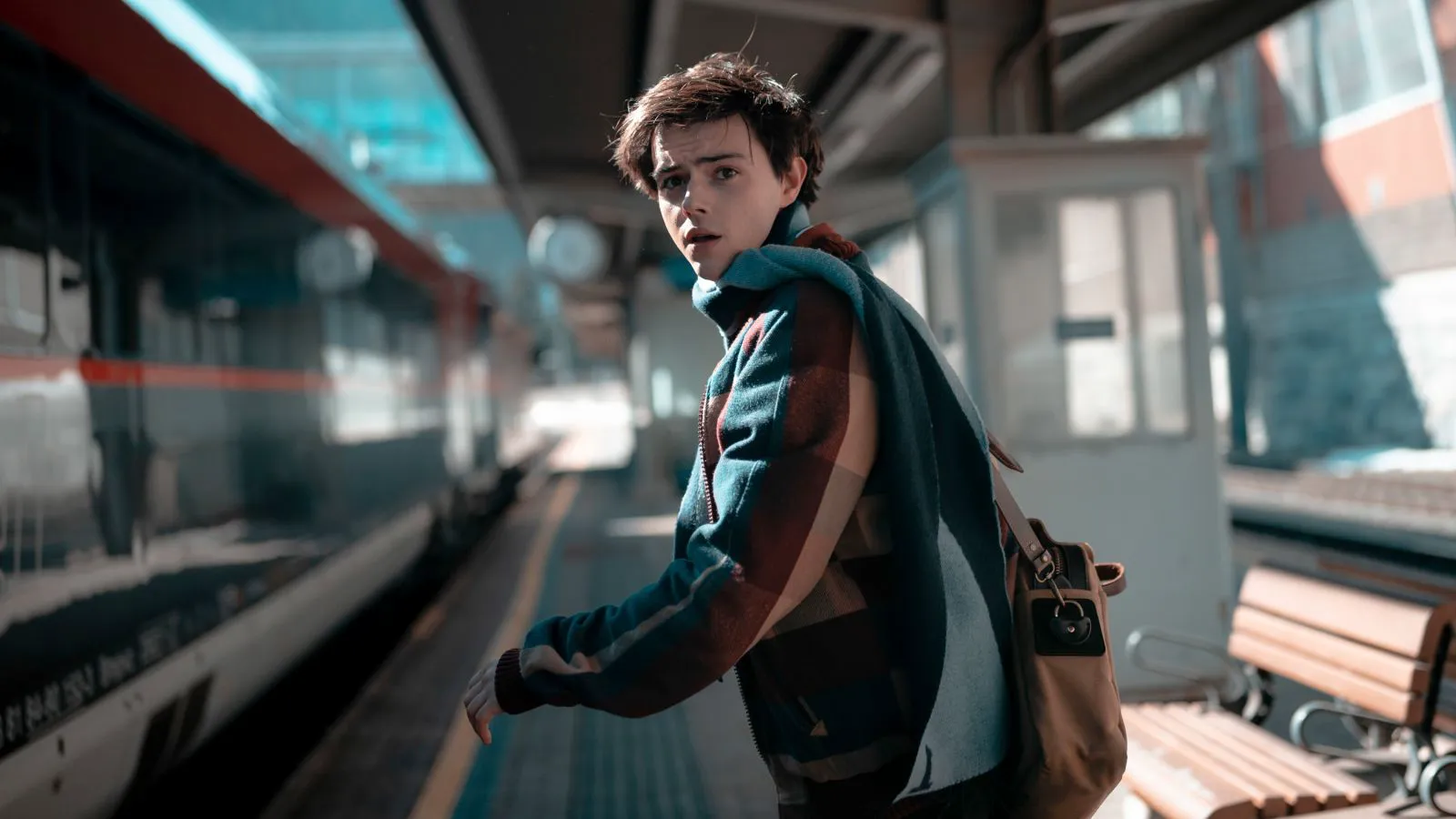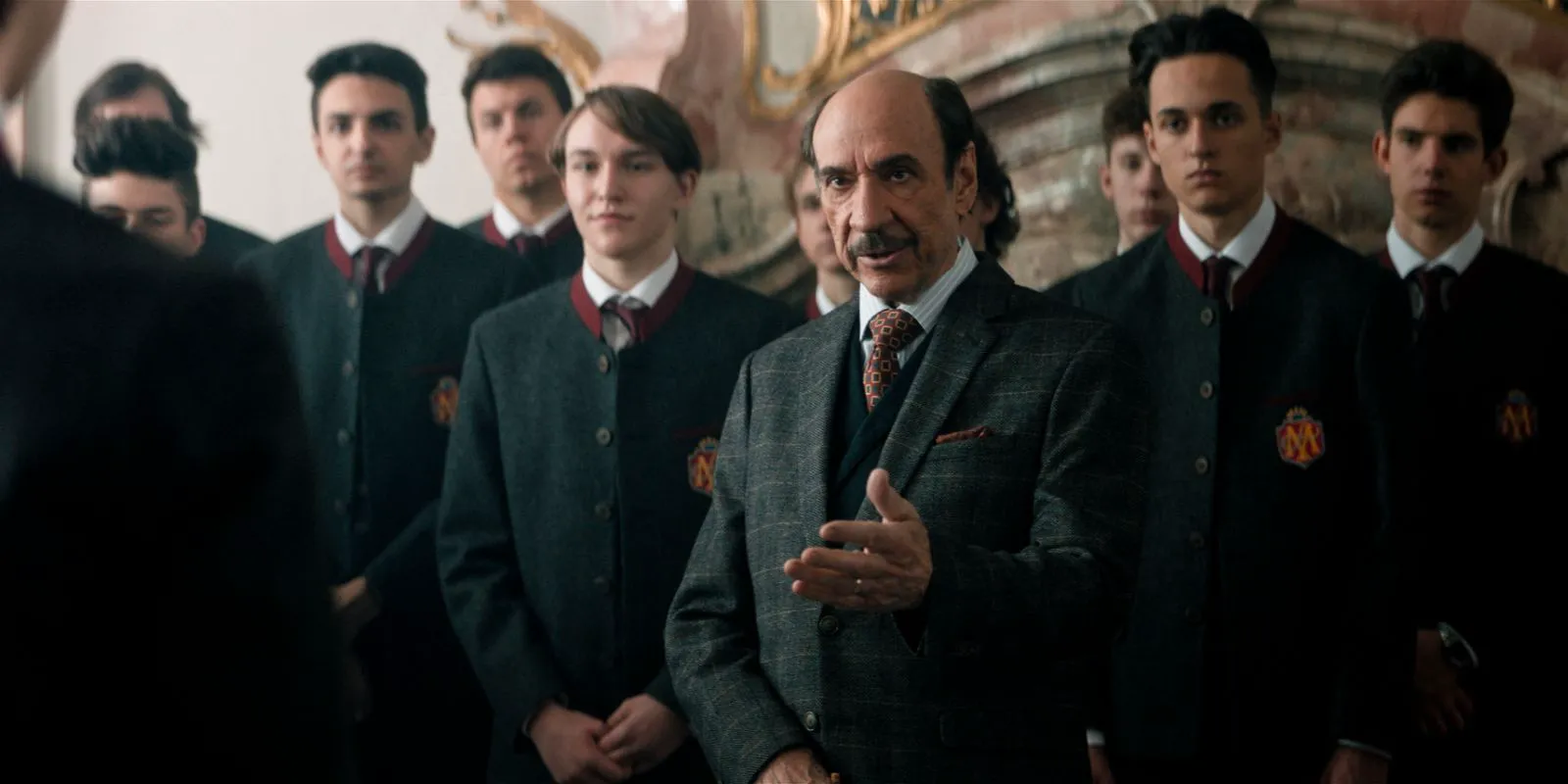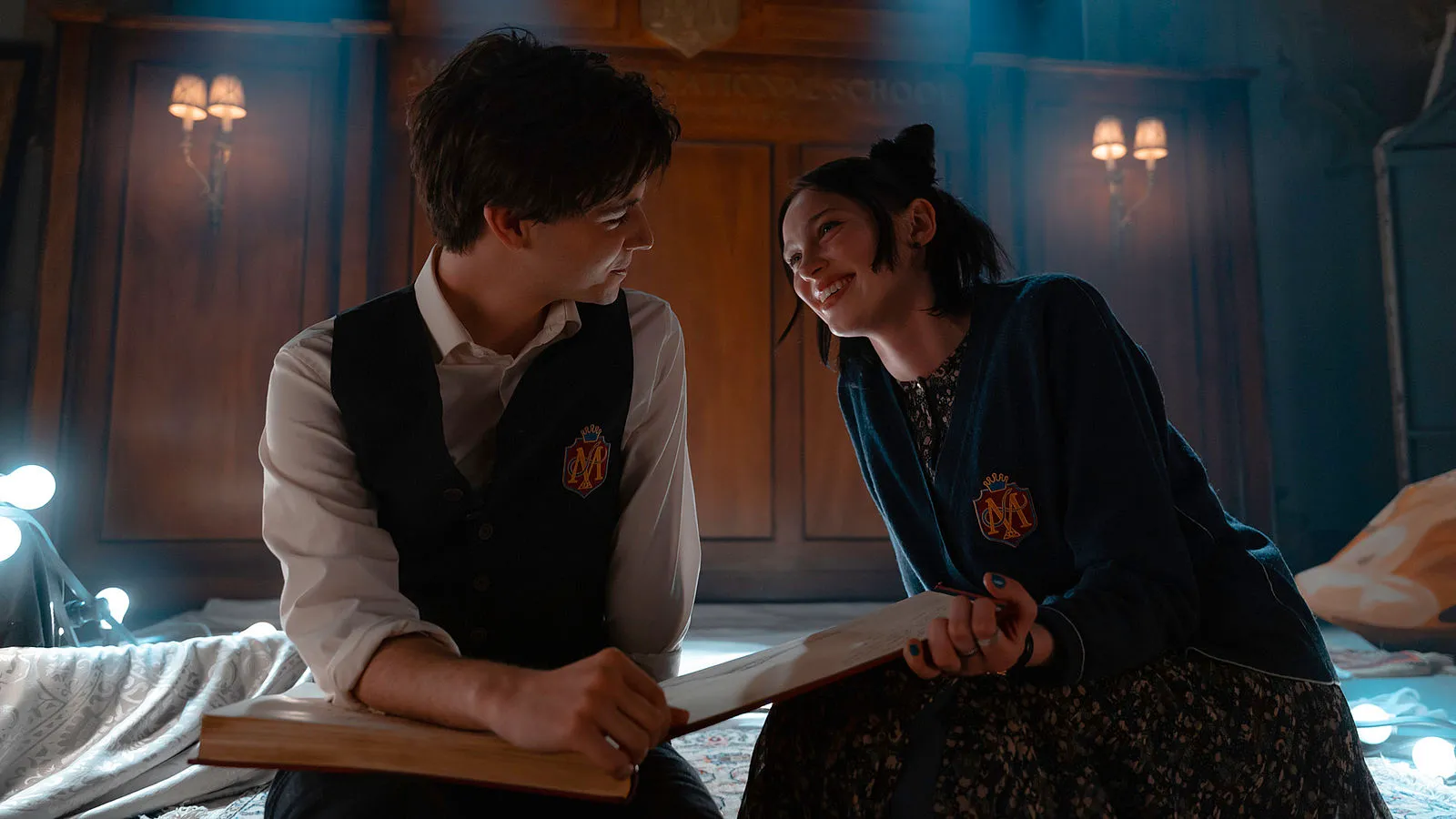Following his father’s death, Tim (Jack Wolfe) enrolls at the prestigious Mozart Music Academy. Since childhood, the young man has dreamed of joining this haven for talented young individuals, but the elite institution proves less than welcoming. On his very first day, Tim clashes with the local bullies, and a respected professor is in no hurry to praise the newcomer’s musical abilities. Nevertheless, Tim is determined to land the role of Prince Tamino in the upcoming production of Mozart’s “The Magic Flute.” One night, he discovers a passage in the school library that transports him directly into the world of “The Magic Flute.” Every night, Tim ventures into this fantastical realm to rescue a princess.

Jack Wolfe in a still from “The Magic Flute”
A Familiar Fantasy Setting
“The Magic Flute” is captivating in its setting: the privileged boarding school nestled in a mountainous region is reminiscent of the “Harry Potter” universe. The long corridors and the trope of the chosen one are not the only homages to the magical saga. For instance, Tim’s roommate and only friend, Paolo (Elliot Courtiour), bears a resemblance to the awkward Ron Weasley, while the school’s main bully (Amir Wilson), who warns Tim against befriending Paolo, inevitably brings Draco Malfoy to mind. Florian Sigl’s film also borrows from “The Chronicles of Narnia”: if a wardrobe served as the portal to a magical land in the adaptation of C.S. Lewis’s novel, then in “The Magic Flute,” that role is assigned to a clock.

F. Murray Abraham in a still from “The Magic Flute”
Visual Spectacle and Musical Interludes
The world into which the protagonist is transported is pleasantly surprising with its visual effects. The costumes and surrounding landscape are a feast for the eyes. Tim immediately encounters a giant serpent and later meets the whimsical Papageno, played by Iwan Rheon, whose performance is one of the film’s few highlights. The young man finds himself inside the universe of the opera, which means musical interludes are inevitable. Unfortunately, the characters’ sudden singing often fails to salvage the plot and, on the contrary, seems somewhat out of place on screen. At times, the proceedings resemble not so much a feature film as a large-scale opera on a theater stage. However, perhaps this effect was intended by the creators? Another question is how much such a device might appeal to the majority of the audience.

Jack Wolfe in a still from “The Magic Flute”
Lost in Translation?
The musical numbers, uneven plot, and excessive theatricality could all be forgiven in “The Magic Flute” if the film had surprises up its sleeve for the audience. Alas, we are forced to follow the hero’s constant transitions from one reality to another, losing the thread of the narrative. The characters’ motivations are not always clear, and the meaning of the trials that Tim undergoes in the magical world is not explained in an accessible way. It seems that understanding the story and fully empathizing with it is only possible if you are already familiar with the plot of the opera.
A Genre-Bending Experiment
“The Magic Flute” is a mixture of several genres. It begins with a passage about a boy who pursues his dream and ends with a love story in the spirit of formulaic rom-coms. The synthesis of everything at once is not a virtue in this case, and holding the viewer’s attention with fairy-tale creatures turns out to be not such an easy task. The parallel magical plot can evoke a variety of feelings: dizziness, boredom, and, in rare cases, even an interest in Mozart’s work. In short, it’s a musical box that some will turn off halfway through, while others will listen to the end – at least out of curiosity.